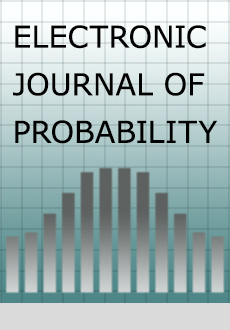Abstract
On the lattice we consider the following oriented (northwest-northeast) site percolation: the lines are first declared to be bad or good with probabilities δ and respectively, independently of each other. Given the configuration of lines, sites on good lines are open with probability , the critical probability for the standard oriented site percolation on , and sites on bad lines are open with probability , some small positive number, independently of each other. We show that given any pair and , there exists a small enough, so that for there is a strictly positive probability of oriented percolation to infinity from the origin.
Funding Statement
M.E.V. was partially supported by CNPq grant 304217/2011-5. During the revision process, M.E.V. was partially supported by CNPq grant 305075/2016-0 and Faperj grant E-26/202.636/2019.
Acknowledgments
The research that brought to this paper was carried out during several years and benefited from various scientific visits to Cornell University, IMPA, and CBPF. M.E.V. is sincerely grateful to the Editor and to the anonymous Referee for their patience and for many important suggestions. Thanks also to Enrique Andjel and Bernardo Lima for useful discussions, and to Lucas Vargas for the help with the pictures.
Citation
Harry Kesten. Vladas Sidoravicius. Maria Eulália Vares. "Oriented percolation in a random environment." Electron. J. Probab. 27 1 - 49, 2022. https://doi.org/10.1214/22-EJP791
Information





